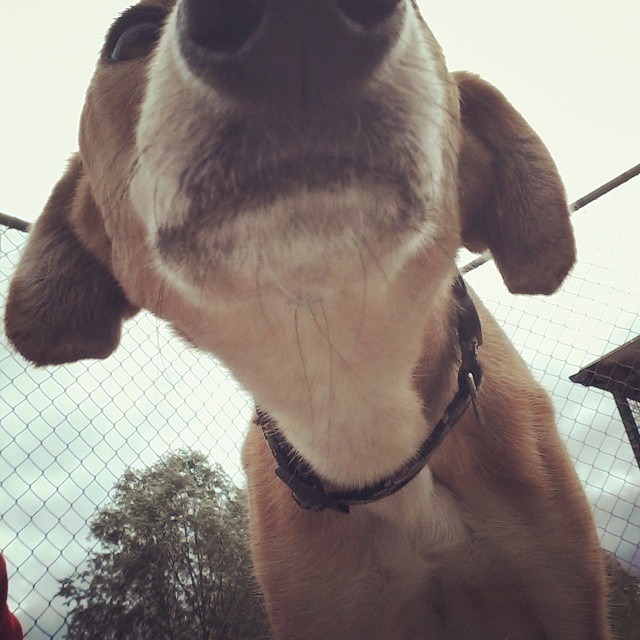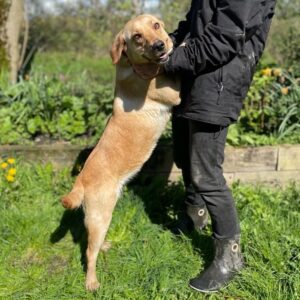You are starting a new life journey when you adopt a dog. It is an exciting time bringing a new pet into the household. When introducing a new rescue dog into your home, there are some things you can do to help ease yourself and you new addition settle in.
You have adopted a new family member and your dog is now in his forever home but your dog doesn’t know that so some time to adjust to new routines and traditions will need to be allowed. Understanding that your new dog or puppy has potentially never been in a house before will benefit both you and your new family member. Many rescue dogs have found themselves in PAWS as they have been abandoned or mistreated in their old life and they will especially need time to adjust to their new way of life. For this reason, many new owners will benefit immensely by attending a training class or puppy class for younger additions to help learn about training and starting to build a bond with your dog. All dogs of all ages benefit from training, but it also helps transition dog and owner into their new life together. Especially for first time dog owners who may be experiencing the joy and tribulations of dog ownership for the first time. Attending a class or investing in a good book or youtube tutorials can help you read your dog’s body language and it will help you communicate to and understand your dog so much better.
When bringing your dog home for the first time, it can be tempting to just let your dog off the lead to explore their new surroundings but it has been found that the best thing to do it keep them on a lead beside you. While on the lead, walk through the rooms you intend on letting your new dog have free rein in once they are settled. Walk the garden and be sure to let them relieve themselves first. This is giving your dog the chance to smell their new home and get to know their environment by your side. They will also learn what rooms they are allowed into and they can do it all on your time and take each new scent and sight in good time. After doing an on lead walk through the house and garden, then you can let your dog off lead. Sit back and observe your new best friend. Let him come to you, if you have kids, don’t allow them to hang on the dog, hug him, put their faces to the dogs face, etc. In other words, explain to your kids they need to give the new dog some space for a little while.
When introducing your dog to other existing furry family members, it is best to do this outside of the home on neutral ground on lead. Let them greet, sniff each other and then go for a stroll straight away to let them get introduced and know each other a little bit outside of the home. Any potential new dogs will have met the new adopted dog at the shelter before any adoption has taken place to ensure they get on. PAWS will talk you through this at the time of enquiry about adoption. Meeting on neutral territory helps your established dog through the transition of living with another dog. This is because bringing another dog into your home is different than a casual meeting and dogs react differently when it is in their territory.
The first night of your new dog in its new home should be like every other night you hope they spend there. Their bed, water bowl, feeding routine and where you intend them to sleep should already be established to help their transition into adopted life. They may not want to settle into a new place on the first night, or may stir or even refuse to eat for the first few days. Remember, this is all very new to them and they do not understand yet that they are finally home. Time and routine is the best way to speed this process along but remembering that they will adjust in their own time is of most benefit. The most useful tip to any newly adopted dog and their new family is that everything will settle in time. Some dogs adapt very quickly to their new lives, other dogs may never have had a home before or never experienced life outside their kennel, they may be shy, have been abused before and need extra love and understanding to help them forget life before being adopted. Unfortunately, it has been the case before where a rescue dog has been returned to a shelter, weeks, days or, in some cases, hours after being adopted because the people have said they did something wrong or failed to settle but all dogs need time to adjust.
It is important to note, too, that not everything is going to be smooth sailing from the getgo, whether it be from puppy house breaking or having visitors over for the first time, not everything will always go exactly as you planned and that is okay as it is all part of the adjustment period.
It’s also important to remember each experience with each dog is different and every dog is unique. Even two dogs of the same breed can differ largely in behavior. We hope this has been of some use to you and helps makes the transition of adopting a new dog as smooth as possible and remember that our staff are always available for advice.





